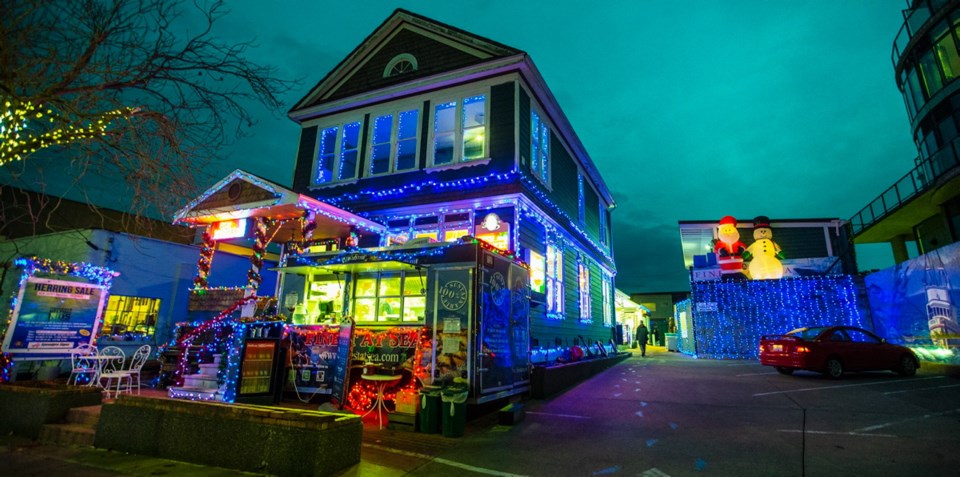A B.C. Hydro report borrows from a pair of classic holiday tales for an inside look at seasonal lighting costs.
The report “From Grinch to Griswold: Trend toward bigger holiday displays increasing electricity bills” says that 57 per cent of British Columbians put up outdoor lights at this time of year. About one-third of those displays use older, inefficient incandescent lights, the nine-page report says.
“British Columbians can save around $40 over the holiday season by switching eight strands of incandescent lights to energy-efficient LEDs,” Hydro says. “LED holiday lights also last 10 times longer and come in a variety of shapes, sizes and colours.”
The report’s tongue-in-cheek rating system — created after a public survey — says people range from being Grinches, meaning they put up no holiday lights, to Griswolds, where they go all out with lights, as per Clark Griswold in the movie National Lampoon’s Christmas Vacation.
A Griswold is described as someone who puts up at least 10 strands of lights — “and often much more to light up the entire block.”
Grinches account for 42 per cent of people, “minimalists” account for 38 per cent and have an average of three strands of lights, “enthusiasts” account for 13 per cent and have an average of eight strands of lights, and Griswolds in all their festive glory account for six per cent.
The report says that Clark Griswold’s ostentatious movie display using incandescent lights would cost about $4,696 over a holiday season, but only $53.70 if it had LEDs — which use 90 per cent less energy.
“They used 25,000 lights in that display,” said Hydro spokesman Ted Olynyk. “So it was 18,900 kilowatt hours that they would have used, which is 20 times more than the average household.”
According to the survey, one in three B.C. residents has a neighbour with a “mega display,” while 15 per cent admit to blowing a breaker switch with an overload of lights and decorations. Some of the biggest displays can contain more than 100,000 lights.
Another energy-eating trend is inflatable decorations, which are generally running at all times and use considerably more power than LED bulbs.
The report ultimately delivers a useful message in light-hearted fashion.
“It’s an opportunity to draw attention to electrical usage during the holiday season with people putting up lights, making sure that they use energy-efficient lights and just see how consumption is throughout the province,” Olynyk said.
He noted that in 2002, Hydro introduced its customers to LED lights, distributing about 20,000 strands over Christmas.
“By 2011 we saw a 40 per cent decrease in the load as it related to holiday lights.”
But that is on the upswing due to more elaborate displays, increasing by 15 per cent. “By replacing one strand of incandescent with one strand of LEDs, it pays for itself,” Olynyk said.
> Do you have a light display you’d like to share? Send us your address and we’ll add it to our Christmas Lights Map. If you’d like, include a photo. Submissions can be made online at timescolonist.com/christmaslights or by emailing [email protected].



